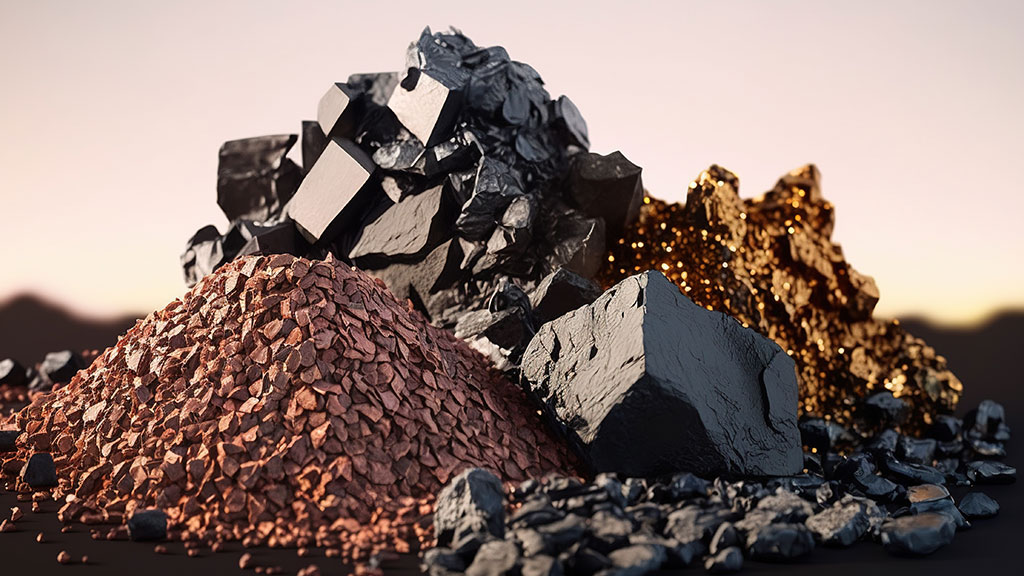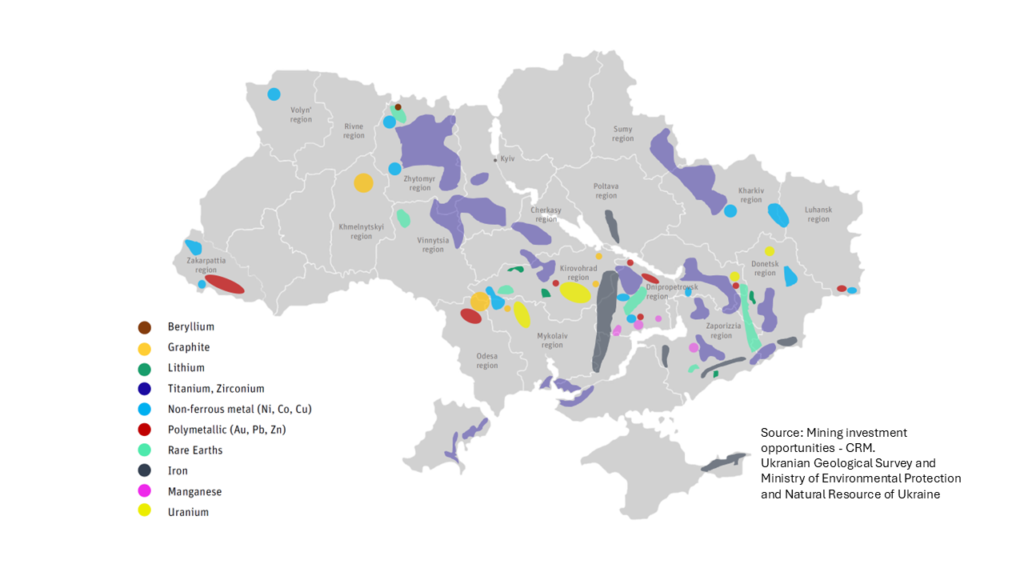Information on mineral resources in Ukraine
The United States and Ukraine have reached a preliminary agreement on Ukraine’s mineral resources, which will provide the United States with Ukraine’s minerals and other natural resources in exchange for assisting Ukraine. Ukraine has considerable resources of minerals used in modern industry. The Geological Survey of Finland has compiled background information on the mineral potential situation in Ukraine and the extractive industry in the country.

The EU has classified 34 raw materials as critical. As far as the Geological Survey of Finland (GTK) knows, 25 of these are found in mineral deposits in Ukraine. 22 of the 50 raw materials classified as strategic by the United States are found in Ukraine.
In addition to uranium, significant deposits of four critical raw materials exist: graphite, lithium, titanium and beryllium.
Different parties, such as the EU and the USA, have defined raw materials critical and strategic for their operations. These raw materials are natural resources that are important for the economy and industry and have risks associated with their availability. These raw materials are used, for example, in the clean transition, defence industry and high technology products. According to one estimate, as many as seven per cent of the world’s titanium is produced in Ukraine. Ukraine is also one of the few countries producing titanium in the world.
Due to the growing demand for raw materials, the Government of Ukraine has been striving for years to develop ore prospecting and mining projects to attract foreign investments, but the war of aggression launched by Russia has decelerated the projects and made them more difficult. The war has had a serious impact on mining and metal production, especially in Eastern and Southern Ukraine, where many of Ukraine’s most important industrial plants are located.
The mining industry currently accounts for 17.6% of exports (12.4% metals and 5.2% other mining products). This is considerably less compared to the 33% before the war. Ore prospecting is currently very limited in Ukraine due to Russia’s war of aggression.

Ukrainian mineral resource estimates vary due to lack of comprehensive geological mapping
Raw materials are found everywhere in Ukraine, but the largest concentrations are located in the central and eastern parts of the country. In the middle of Ukraine is a more than 2,500 million years old area called the Ukrainian Shield, which contains especially iron and titanium. The geologically younger regions of Eastern Ukraine, on the other hand, contain graphite, lithium, oil and gas.
Estimates of Ukrainian natural resources and their monetary value vary. No comprehensive modern geological mapping has been carried out in Ukraine. Additionally, the profitability of mineral extraction in the market is affected by factors such as their depth and location, the purity of the ore to be extracted and by-products from mining activities.
Ukrainian bedrock contains up to 8,000 mineral deposits classified as Ukrainian resources of 95 different minerals. Of these, more than 100 are deposits of metallic minerals. Significant resources of raw materials classified as critical by the EU include at least graphite, lithium, titanium and beryllium.
It should also be noted that mining is expensive, time-consuming and a long-term process. Comprehensive additional studies and permit processes are needed to obtain the resources worth thousands of billions. Even in normal conditions, it may take nearly 20 years to open a mine after a finding.
Mineral resources are different from mineral reserves
Mineral resource is a broader of the two terms and does not directly comment on economic usability. Mineral reserve is an economically exploitable part of mineral resources.
More information
Information about EU critical and strategic raw materials
You may ask for more information and interviewees through GTK’s communications: viestinta@gtk.fi
